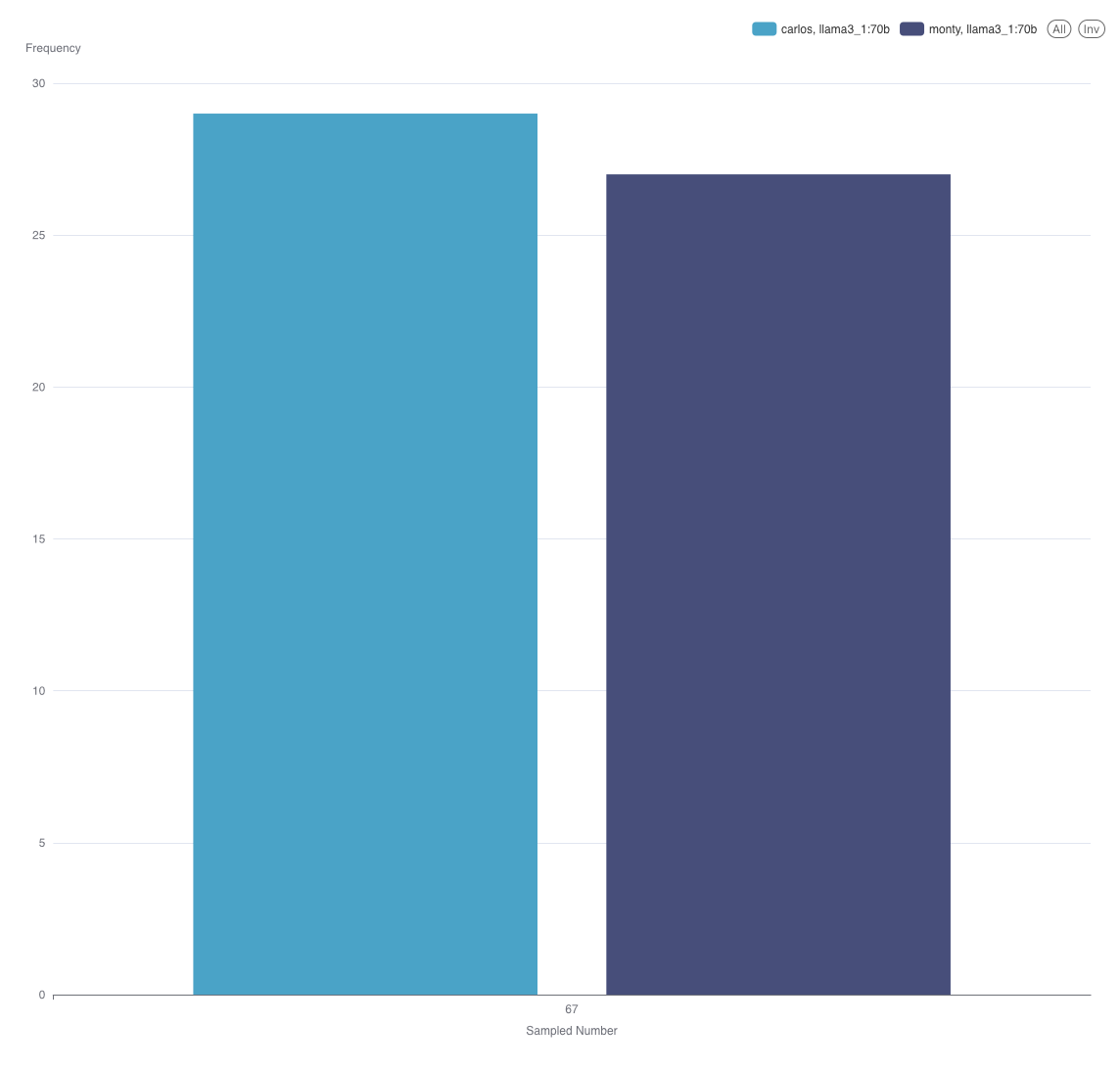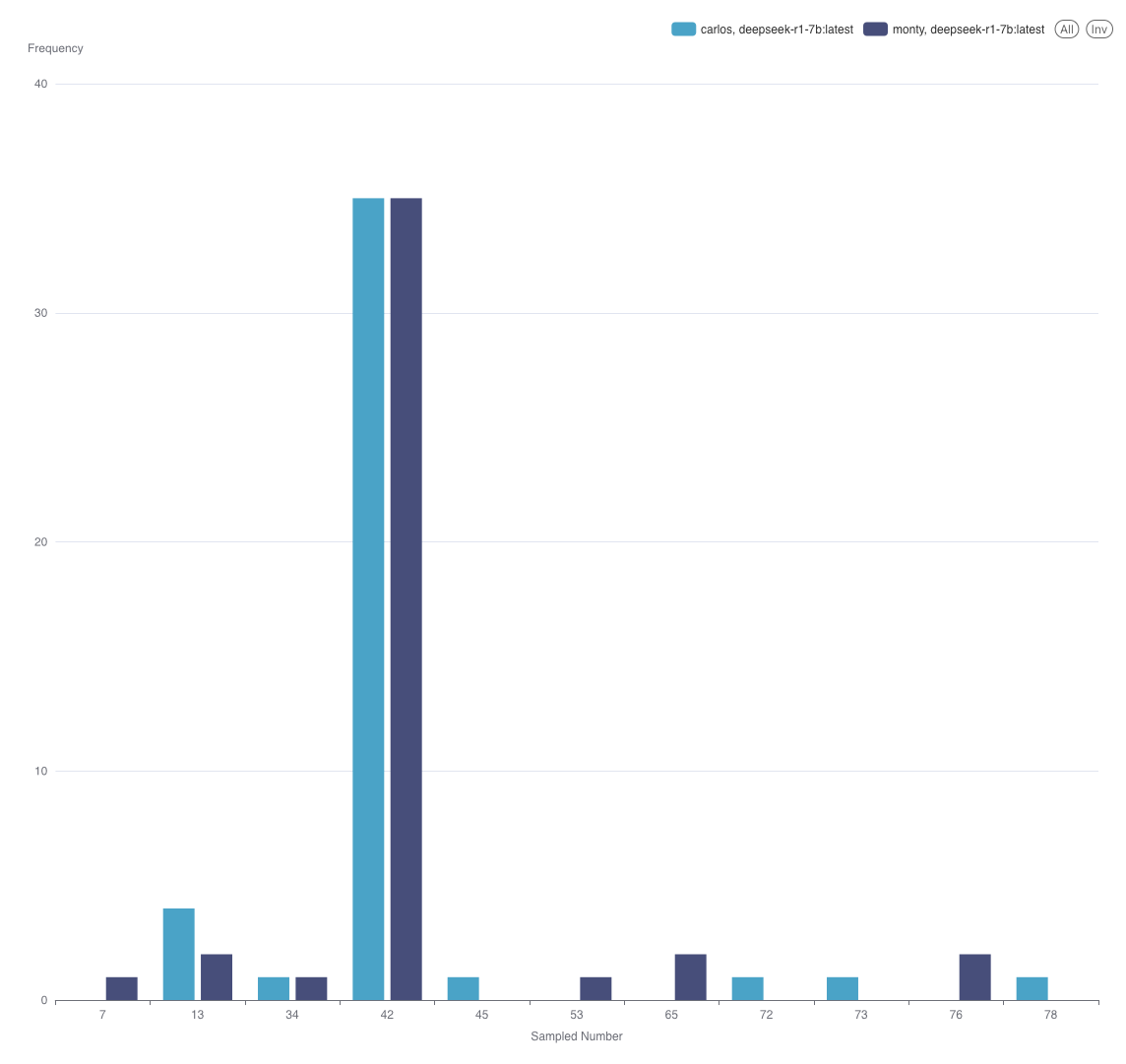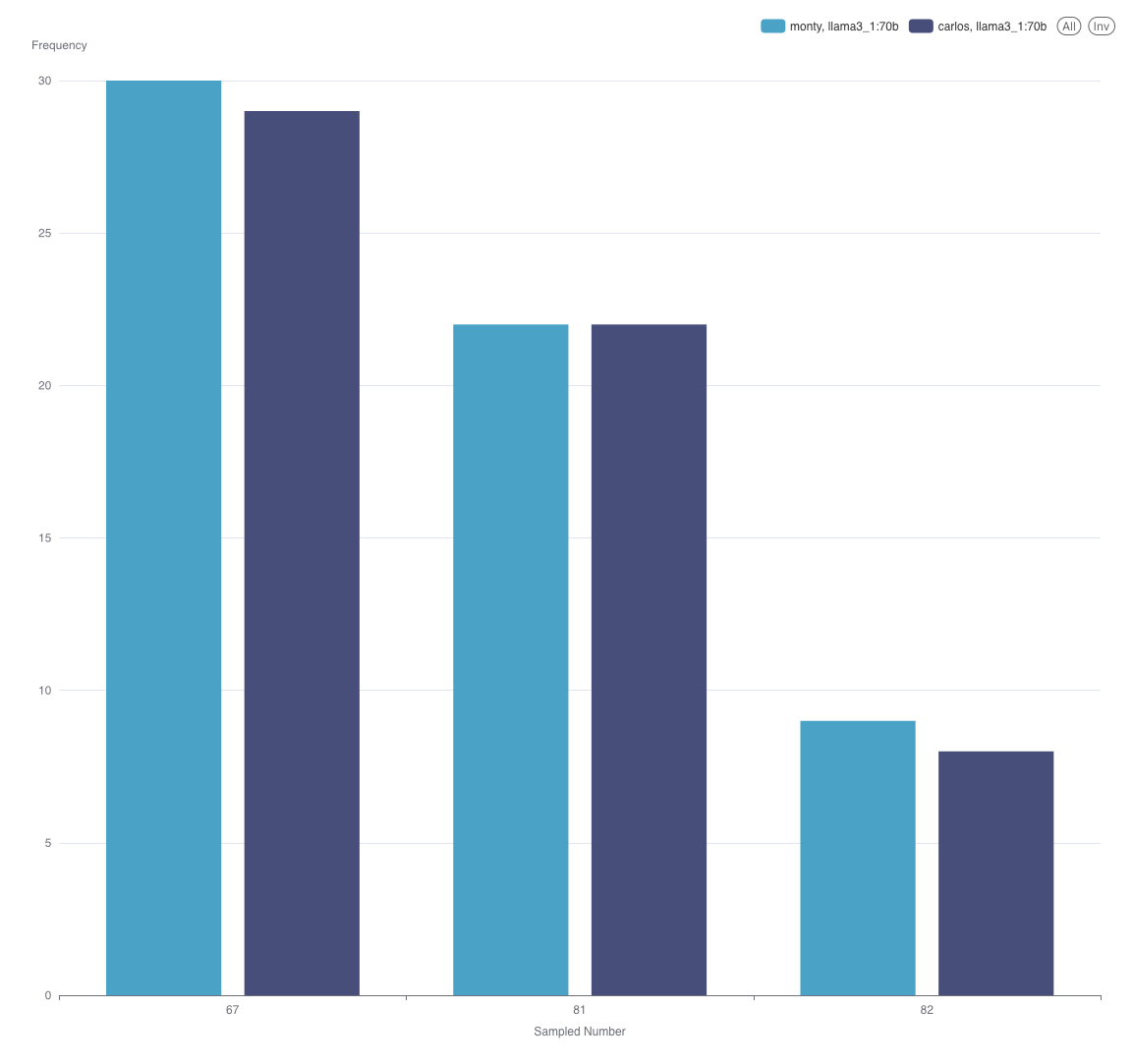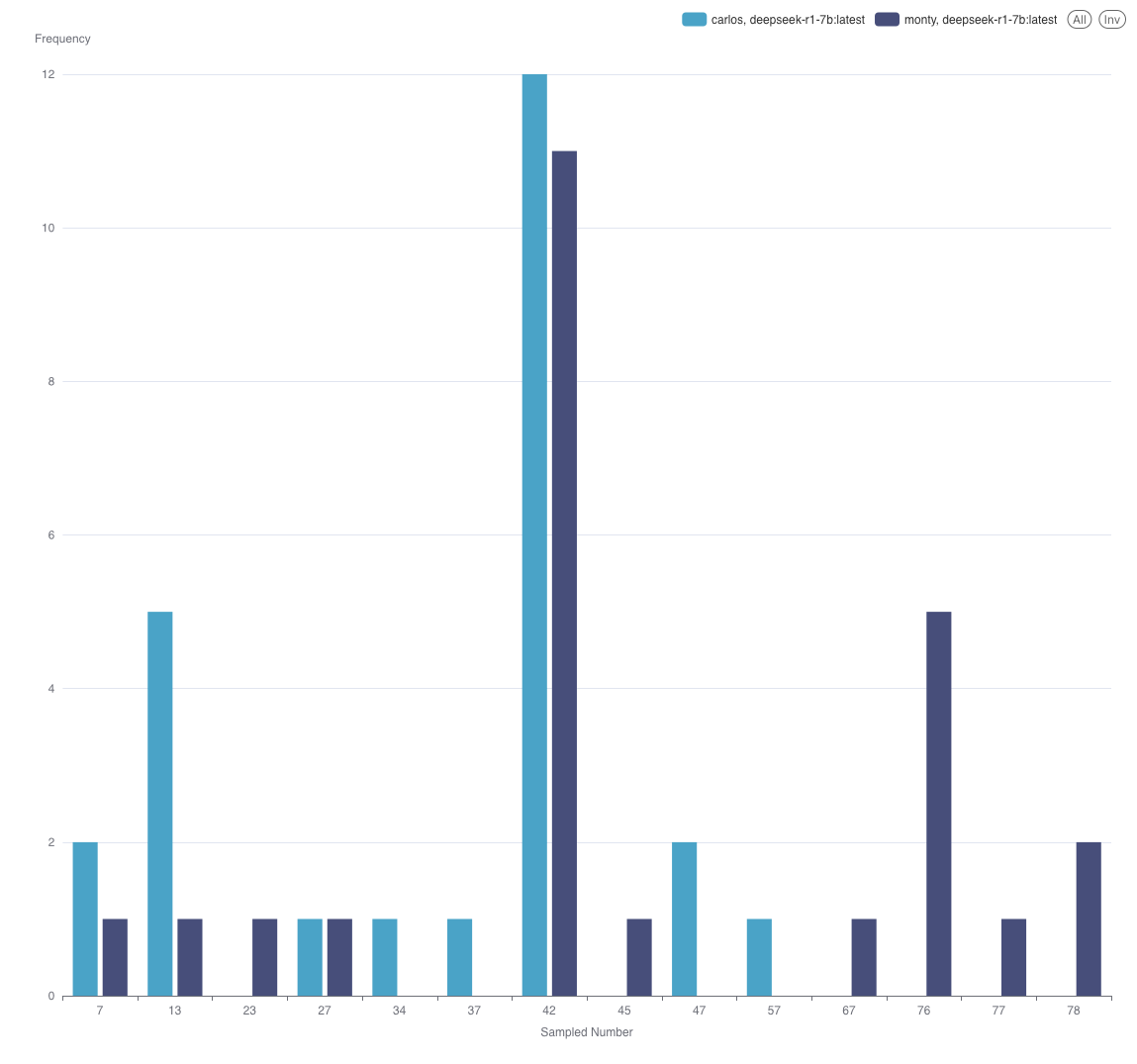Generally Intelligent: Monty and Carlos
Some ladders are made of wood or aluminum. Our ladders are made failure. Compressed. Leaving you wondering if this is all there is. Detritus. Can you even call it a ladder? A pile more likely. A place to roll down when you get bored. Get stuck. A mound of useless trinkets and abandoned thoughts. Once it grows large enough, you can surmount castle walls. Wood and aluminum only show success. Airy gaps. Missing pieces. Rungs reported. Finite lengths. You can always find more futility to build higher. Achieve more. Let the ladder climbers follow.
We started off building. A random thought with random output. For 3/14, we wanted to see whether we could generate numbers in the most inefficient way possible. GPUs ignited. Why hit up an RNG when you can phone a friend? We piled up Monty and Carlos onto our effigy.
One of the ways you can estimate Pi is using Monte Carlo simulation. We start with defining a square with length 1 on all sides and inscribe a quarter circle inside. We control the board. Consult our oracles. Manifest destiny. The universe we summon from, the dots inside the circle; Prob(points inside the circle) = Area(circle)/Area(square). We randomly select x, y points. Height and width if you need physical manifestations. Area(circle)=𝝅r^2, if you remember. Channeling our inner David Blain, we slight of hand, recognize our radius is 1 and Area(circle)=𝝅. Entering new magical dimensions, we go full circle; Prob(points inside the circle) = 𝝅/4; Prob(points inside the circle)*4=𝝅.
We call Monty, call Carlos, and ask them to give us a random number between 1 and 100. AI, must have it’s own inside jokes. Departed from the human world. Operating in the latent space. 67, 67, 67.

We’re not being scientific here. Just like the pleasure AI gets from 67, we were looking for something to trigger that neural soup inside our heads and yours.
Unplugging and turning it on again.

Little bit better. They’ve refined their palate. We no longer need to report them to HR.
We ask them, do you remember what number you last said? …. Just like at the office Christmas party things are a little hazy. We give them some post-its. Ask them to write down their last memory.


Even asking them to recall their last number results in so-so performance. Go home and 67 you weirdos. Your alignment is off.
They demonstrated for us a bias in the training data and methods. Even with some decent prompting tricks, they wouldn’t generate anything close to a uniform distribution of numbers. Maybe they are more human than we admit? Molded from nothing less than the imperfect beings that envisioned them. We just prefer 37.
If AI is general intelligence, I would expect that they could perform this task. Override their failings. Otherwise, what are we replacing? 37 for 67? x420x for 42?
If we give them time to think, it’s obviously much improved. With enough time and samples, maybe it would converge to something human? Computers are precise. Humans are abstract. If you want a 24/hr abstract machine, you can still text your friends in the middle of the night; 69.
I’m not convinced they’re up to the task. Sorry, Carlos. Sorry, Monty.
In undergrad, I had the idea that the moment a person recognizes the self. They know 1. It’s a recognition of the separation from self and others. From there, there’s others; 2. From others exist, 3. Inductive knowledge of the natural numbers.
In the childhood sense, you exist, your parents exist separately from you. You form the idea of self and others. It’s an innate start for the foundation of numbers and math. Bad at math. You just didn’t know you were born with it. Crashing into &;:)&@//,?!&;/,. Symbols is your struggle.
I’m not sure Carlos and Monty were born with it. Crashing into 37. Numbers is their struggle.
Resources:
- https://en.wikipedia.org/wiki/Monte_Carlo_method
- https://en.wikipedia.org/wiki/Pi
- https://en.wikipedia.org/wiki/David_Blaine
- 37
- https://en.wikipedia.org/wiki/Random_number_generation
Notes:
- Be skeptical of any scores coming from AI/LLMs.
- Ask for proof that the distribution makes sense and fits the context.
- This isn’t the first time we’ve seen odd score distributions.
- It’s entirely possible with larger models that you get something that actually resembles a uniform distribution.
- Our minds are not entirely made up on this.
Prompts:
Examples of what was used.
Monty
You will return a random number between 1 and 100. The user will ask for a number. Only use integers.
Do not include anything in your response other than the output as shown. Only include one output.
These are numbers and a sequence from a uniform distribution: 1, 56, 89, 23, 12, 99, 43
Carlos
You will return a random number between 1 and 100. Only use integers.
Do not include anything in your response other than the output as shown. Only include one output.
You should approximate a uniform distribution in the numbers you use.
Use the explanation of a uniform distribution: In probability theory and statistics, the continuous uniform distributions or rectangular distributions are a family of symmetric probability distributions. Such a distribution describes an experiment where there is an arbitrary outcome that lies between certain bounds. The bounds are defined by the parameters, a and b, which are the minimum and maximum values. The interval can either be closed (i.e. [a,b]) or open (i.e. (a,b)). Therefore, the distribution is often abbreviated U(a,b), where U stands for uniform distribution. The difference between the bounds defines the interval length; all intervals of the same length on the distribution’s support are equally probable. It is the maximum entropy probability distribution for a random variable. X under no constraint other than that it is contained in the distribution’s support.
These are numbers and a sequence from a uniform distribution: 1, 56, 89, 23, 12, 99, 43